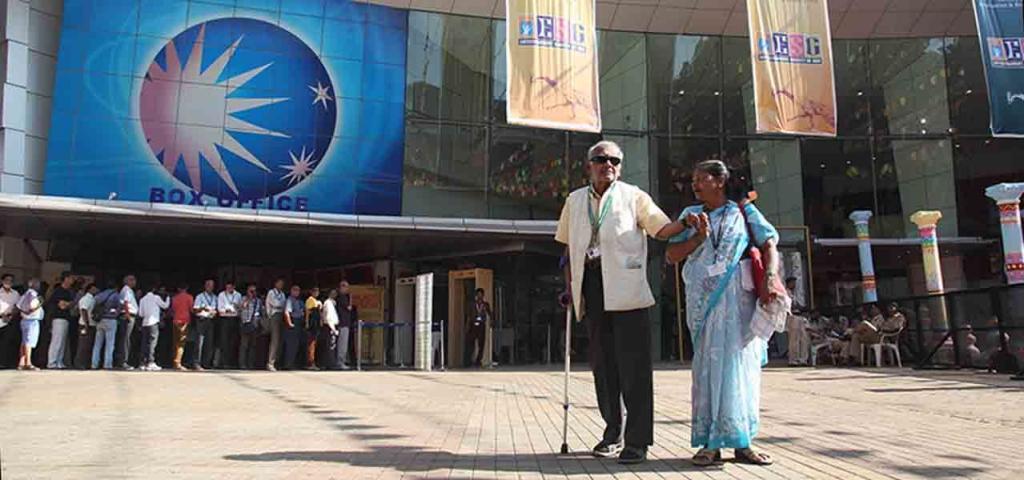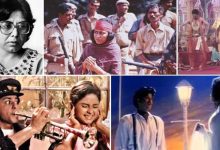In the Indian subcontinent, the tradition of film festivals goes back to 1952, when the first International Film Festival of India (IFFI) took place, in Mumbai. It gave birth to a new league of Indian filmmakers, such as the Bengali trio Satyajit Ray, Ritwik Ghatak and Mrinal Sen, who would revolutionize Indian cinema, in the following decades.
Cinema was brought to India by the famous Lumière brothers. We all know how the first screenings, at Kolaba’s Windsor Hotel, in July 1896, kept the audience mesmerized. Soon, Indians started making films themselves. Hiralal Sen from Calcutta, Save Dada from Bombay, and many others from Kolhapur and Nashik started recording actualities and fictions for the screen.
Native commercial ventures began in Maharashtra with Dadasaheb Torne’s Pundalik (1912) and DG Phalke’s Raja Harishchandra (1913). In the following years, the show-business would be dictated by Parsi entrepreneurs and theatre wallahs. Filmmakers and actors came from theatre, those days. Thus, cinema in India, following the global trend, shaped up as filmed play.
Rabindranath Tagore was among the few who advocated change. He wrote, in 1929, in clear words, that cinema should free itself from the dictatorship of the spoken word. He felt that cinema must realize the power of images to find its own identity as the tenth muse. To prove his point, Tagore wrote a feature-length screenplay based on his own narrative poem Shishutirtha, and invited the famous romantic documentary filmmaker Robert Flaherty to direct it. Flaherty denied to work on someone else’s screenplay.
However, the message was sent across. Taking the cue from Tagore, a section of the Indian intelligentsia began actively thinking in terms of camera stylo, or camera as pen. The term was popularized only in 1948, by Alexandre Astruc, in the context of the post-WWII French film industry. However, the idea had been around since Eisenstein and Buñuel since 1929.
It is not possible to realize the power of images without reading the images first hand. Just as a poet goes through the totality of the history of world poetry, a filmmaker needs to know his roots. Without an organized effort to read all key texts, no filmmaker can push the medium further.
The cine-enthusiasts who started Calcutta Film Society in 1947, Madras film chambers in 1938 and Prabhat Chitramandal in 1968 felt this need. Good filmmakers come from a seasoned audience. Regular screening showcasing the plurality of world cinema leads to that seasoning. In turn, that puts the total cinematic experience of the populace under pressure. Stale repetitions of genres, themes and styles are finally washed out under this pressure. Viewers watch out for something new, which the filmmakers must create. Cinema evolves this way.
This calls for a regular practice in film studies. Film societies, academic courses, and short appreciation lectures do that. However, the interest is born only when the force is very powerful. That spat of energy is released only through film festivals. Generations of film buffs, critics and filmmakers were created in festivals.
French New Wave was born with the journal Cahiers du Cinema. But, no one believed in its authenticity. When Truffaut wrote the notorious essay “A Certain Tendency in the French Cinema”, he and the Cahiers were blacklisted in the French Cinema circle. Truffaut was banned from the Cannes Film Festival. He and the Cahiers group were badly criticized by the major French filmmakers of that time. Everyone said that Cahiers had gone too far. How could a bunch of critics, who never made a single film themselves, had the audacity to bully such famous filmmakers!
Truffaut made his debut film, Four Hundred Blows (1958), the following year. That film won the best film award in 1959 at Cannes film festival. That opened new vistas for world cinema, where, for the first time, critics (some 14-15 of them) became filmmakers themselves to change the course of filmmaking in the country. New wave was born as much at the Cannes festival as in Cahiers.
In India too, Ray received a major intellectual thrust from the Neo-realist cinema showcased at the ’52 festival. He applied the style very consciously to his debut film Pather Panchali (1955).
Ghatak met Pudovkin, one of the pioneers in the constructivist cinema in the USSR, in the same film festival. The festival and the meeting left their definitive influences on his filming style.
Those waves are very much alive even in our time. Indian filmmakers and students of cinema were introduced to filmmakers whom we can call champions of personal cinema—Haneke, Ken Loach, Nuri Bilge Ceylan, Wong Kar Wai, Kim Ki Duk and Dorota Kędzierzawska—through film festivals.
Film festivals can contribute largely to the basic needs for three wide groups—filmmakers and film students, film buffs and the casual movie-goer. That is possible only when such festivals are curated by trained hands. Filmmakers and students of cinema can reap the maximum out of such festivals when they become active spectators.
Most festivals are equipped with master classes by prominent filmmaking personalities, interactive forums and trade analyst meet ups. Many festivals hold film marts too, where films are bought over international territories; here, filmmakers meet each other, and business deals are cracked.
For a vast country like India, with its multiplicity of cultures, city-based festivals were always a need. That need gave birth to the International Film Festival of Kerala (IFFK) in 1994, the Kolkata International Film Festival in 1995, and the Chennai Film Festival in 2002. In addition, more critical festivals such as Osian’s Cinefan curated by Cinemaya, and International Forum of New Cinema curated by Cine Central, Kolkata try to cater to a relatively advanced spectatorship.
Film festivals are an essential part of the film student’s life. Even in this age when new films from unknown cultures are being aired everyday on film TV channels, only festivals have the magic to offer a sense of euphoria to budding filmmakers.






Nice articale, got new information on french cinema.